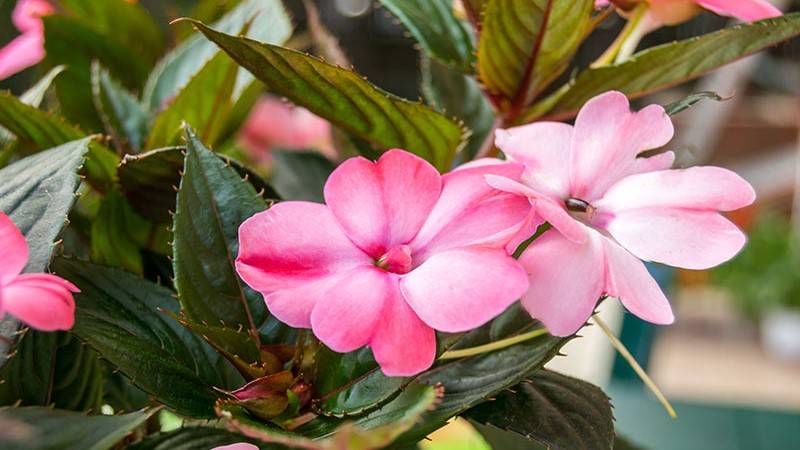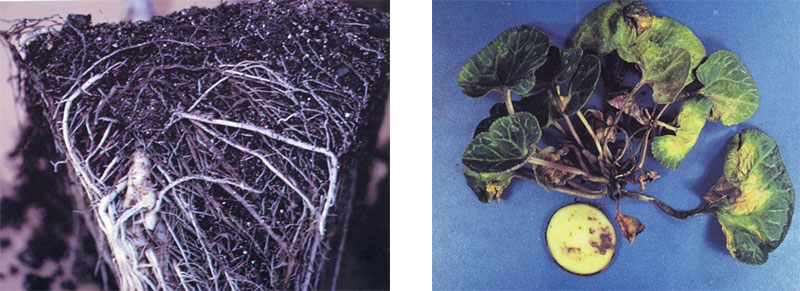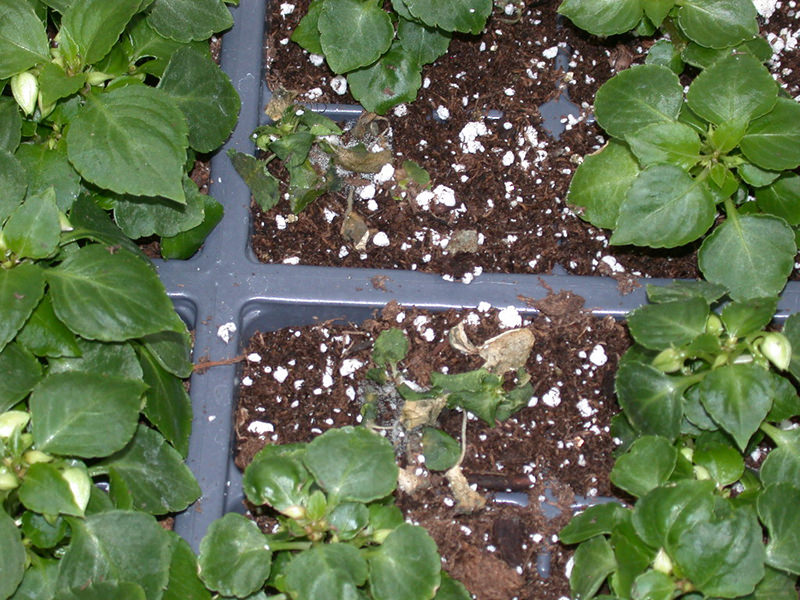Root Disease Profile: Fusarium


Pathogens are always present in the greenhouse and are a continuous challenge for growers. The combination of plant material, moisture and certain environmental conditions can favor plant root diseases.
In some cases, high fertilizer levels can predispose plants to pathogenic fungi. This is especially true for plants with a longer growth cycle that remain in the greenhouse for a long time, such as cyclamens.
Fusarium: a multitude of symptoms
A common root disease is caused by the plant pathogen Fusarium, which can lead to considerable crops losses, increased fungicide applications, reduced crop quality, added cost and increased labor.
Fusarium can attack plants on the plant foliage, plant roots and, in certain occasions, nursery tree seed. Fusarium can cause a multitude of symptoms from leaf spots to cutting rot, crown rot, wilt, bulb rot and even root rot. Fusarium spores move easily with water and can be splashed from one plant to another.

What are the types of Fusarium?
Plants severely impacted by this root disease will wilt and die, but inspecting the root system periodically is a good way of checking for the disease before it’s too advanced to control. Healthy plant roots are generally white and firm, whereas decaying roots may appear water-soaked and have brownish coloring.
Fusarium root rot often appears in propagation as cutting rot and may not always be the primary pathogen involved. Wilt diseases are usually caused by Fusarium oxysporum with a separate type for each type of plant attacked.
What to check for?
A wide range of symptoms can be caused by Fusarium spp. Black or brown sunken lesions can form at the base of stems. There can be reddish streaking in petioles near the plant crown and sometimes pinkish or white masses of mycelium growing on the base of cuttings or in the crown of a plant.
This most commonly forms when plants are in propagation and under mist or high humidity. Cutting rot and dieback as well as stem cankers with red or orange, round fruiting bodies can be found. These are the reproductive structures that can form in advanced infections. Stunting, wilting and yellowing are each signs of a Fusarium wilt infection.

How to Prevent Fusarium
- Proper sanitation of all benches and tools used.
- Quarantine cuttings and ensure they are treated as needed to prevent the introduction of pathogens.
- Use growing media that are adapted to the environment in the greenhouse. For a fall crop, when evapotranspiration is low, it’s recommended to use a medium with good porosity, like PRO-MIX® HP®. This growing medium is available with AGTIV® STIMULATE™, which contains Bacillus to support a healthy root environment, and/or AGTIV® REACH™, which contains mycorrhizae to enhance nutrient uptake and root development. These active ingredients help plants resist stress and support overall plant health. PRO-MIX growing media with AGTIV® AMPLIFY™ combine both Bacillus and mycorrhizae, offering comprehensive support for your crops.
- Air temperature and ventilation must be adapted to the crops grown and the climate outside the greenhouse. Minimize condensation and high humidity in the greenhouse by providing air exchanges to reduce relative humidity.
- If there is a chance of disease, it must be diagnosed by an independent laboratory to choose the proper chemical treatment for controlling the organism.
If you suspect or want to be sure that the plants you have ordered are free of Fusarium, send a sample of plant growing medium and/or plant tissue to a laboratory that offers this service. The DNA scan is a basic test that determines the DNA of various species of Fusarium that can occur in greenhouse crops.
Reference:
- Ann Chase, "Formidable Fusarium", September 2013. In Greenhouse Management.